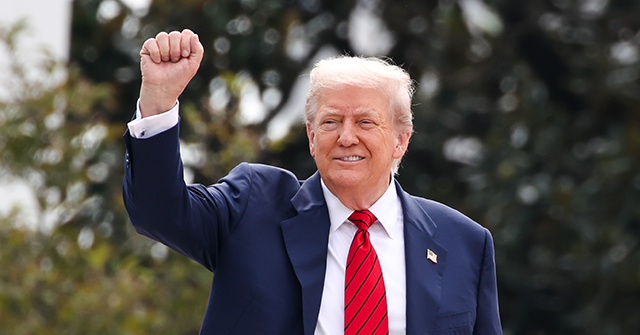The Trade Revolt That Was Never Going to Happen
Back in mid-July, Financial Times columnist Martin Wolf issued a call to arms. President Trump’s new tariff plan, he warned, was not just “madness” but a moral offense, one demanding coordinated retaliation by America’s trading partners. The United States had “gone rogue,” he declared. It was time for the world to push back.
But like so many economists and pundits, Wolf missed a basic truth about the global economy: there is no international coalition that can afford to stop trading with the United States because they all depend on us to buy what they sell.
What we got in the weeks that followed wasn’t retaliation. It was a line of nations quietly negotiating deals, offering concessions, and preserving their access to the world’s largest, most open, and most reliable buyer. The UK wanted to be first in line. Japan moved quickly to pledge new investments and open its markets to American products. The EU rushed to the table and cut a deal. Switzerland, having missed the deadline, sent its president to the U.S. without bothering to wait for an invitation.
The global trade revolt never came because it was never possible.
All Surplus, No Deficit Anchor
What Wolf and others overlooked is the structural nature of today’s global trading system. Nearly every economy he hoped would join the counteroffensive—the EU, Japan, China, South Korea—is a net exporter. These countries have structured their economies so that they depend on running trade surpluses to drive domestic growth, employment, and fiscal stability.
Which means they need a net importer on the other end of the ledger. And there’s only one country that consistently fills that role: the United States.
The mathc is simple. The EU ran a current-account surplus of 2.5 percent of GDP in Q1. Japan posted its largest surplus on record last fiscal year. China continues to post a goods surplus well north of $800 billion.
That’s not a coincidence. It’s the mirror image of America’s trade deficit, which topped six percent of GDP last quarter. Without the U.S. absorbing their exports, these countries would have no one left to sell to. They cannot coordinate a response to the U.S. because none of them is willing to adopt the structural reforms that would rebalance their economy so that their exports matched imports and so that their consumers could purchase as much as their workers produce.
And why would they? What would be the point of rebalancing their economies to fight the U.S. when the basic demand of the Trump administration was simply that they begin the rebalancing? Agreeing to accept U.S. tariffs and investments requirements requires less structural change to their economies than becoming the deficit anchor for an anti-American coalition would.
So, while pundits were imagining a new anti-American trade bloc, actual governments were doing the math and realizing that the U.S. remains the indispensable buyer of last resort.
You Can’t Retaliate Against Your Best Customer
Retaliation requires leverage. And in trade, leverage comes from being able to walk away. But no one wants to walk away from the U.S. consumer.
Wolf singled out tariffs on Brazil and Laos as particularly egregious. But these examples actually underscore the point. Laos, with a tiny bilateral surplus, has no fallback market. Brazil—despite its bluster—relies on U.S. imports of commodities, aircraft, and metals to sustain key industries. The power imbalance isn’t ideological. It’s structural.
And the same holds for bigger players. Germany doesn’t want to become a net importer. Japan can’t afford to be. China fears what would happen if it stopped running surpluses. There is no one in a position to replace the U.S. as the buyer of last resort.
That’s why they didn’t retaliate. They negotiated.
The WTO Argument Fails Too
Another fantasy—shared by many of Trump’s critics—is that the WTO could step in to discipline the U.S. and restore order. But that misreads both history and present reality.
The WTO has long tolerated asymmetric trade arrangements. Europe’s VAT rebates favor exports. China’s state capitalism distorts pricing. Japan’s market access barriers persist in key sectors. These aren’t violations of global norms—they are the norms. What Trump’s tariffs challenged wasn’t the letter of WTO law. It was the fiction that the U.S. should permanently tolerate a lopsided system in the name of “free trade.”
The real deviation wasn’t Trump’s tariffs. It was the elite consensus that nothing should ever disturb the imbalance.
The Realignment Already Happened
The most telling fact is not who attacked Trump’s tariffs, but what happened after. If the strategy were as flawed as Trump’s critics insisted, we would have seen retaliation, withdrawal, or disruption. Instead, we saw a parade of trade envoys looking for terms.
Because in the end, the rest of the world understands what many economists still don’t: the U.S. economy is a keystone of the global trading system. You attempt to rebel against it, and the whole export-led model collapses.
America’s critics may not like the new rules, but they still need access to the American market.
Read the full article here


